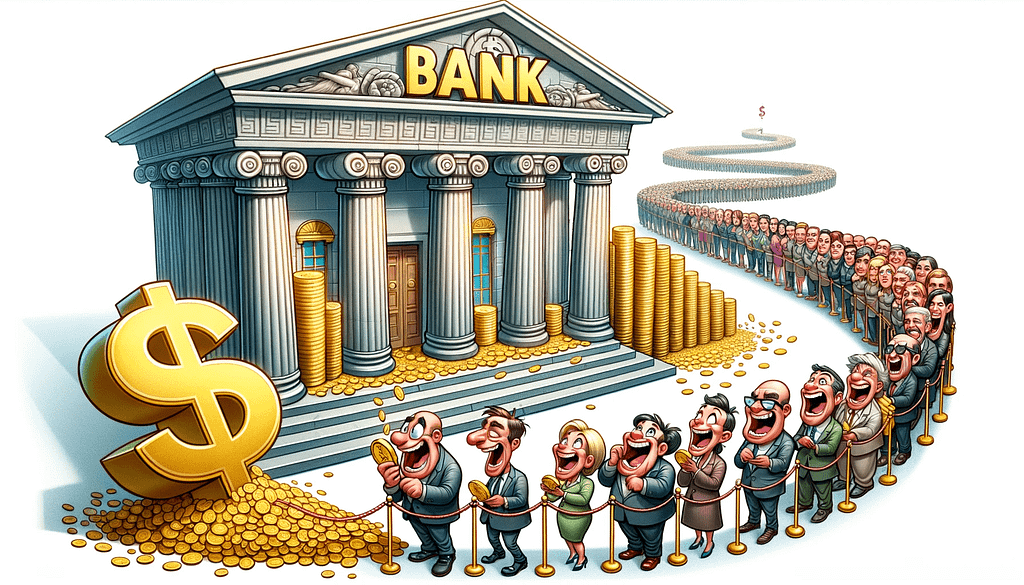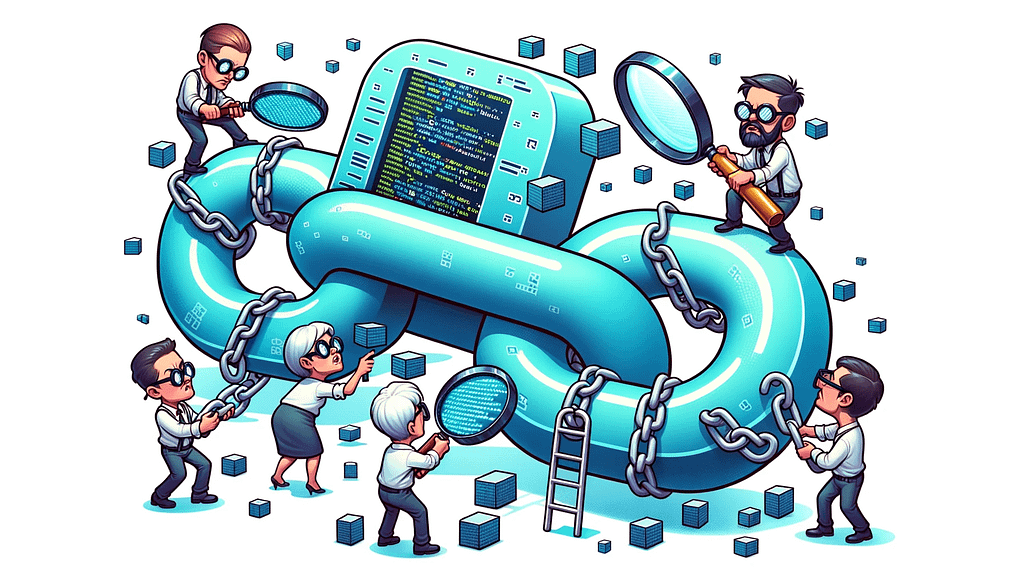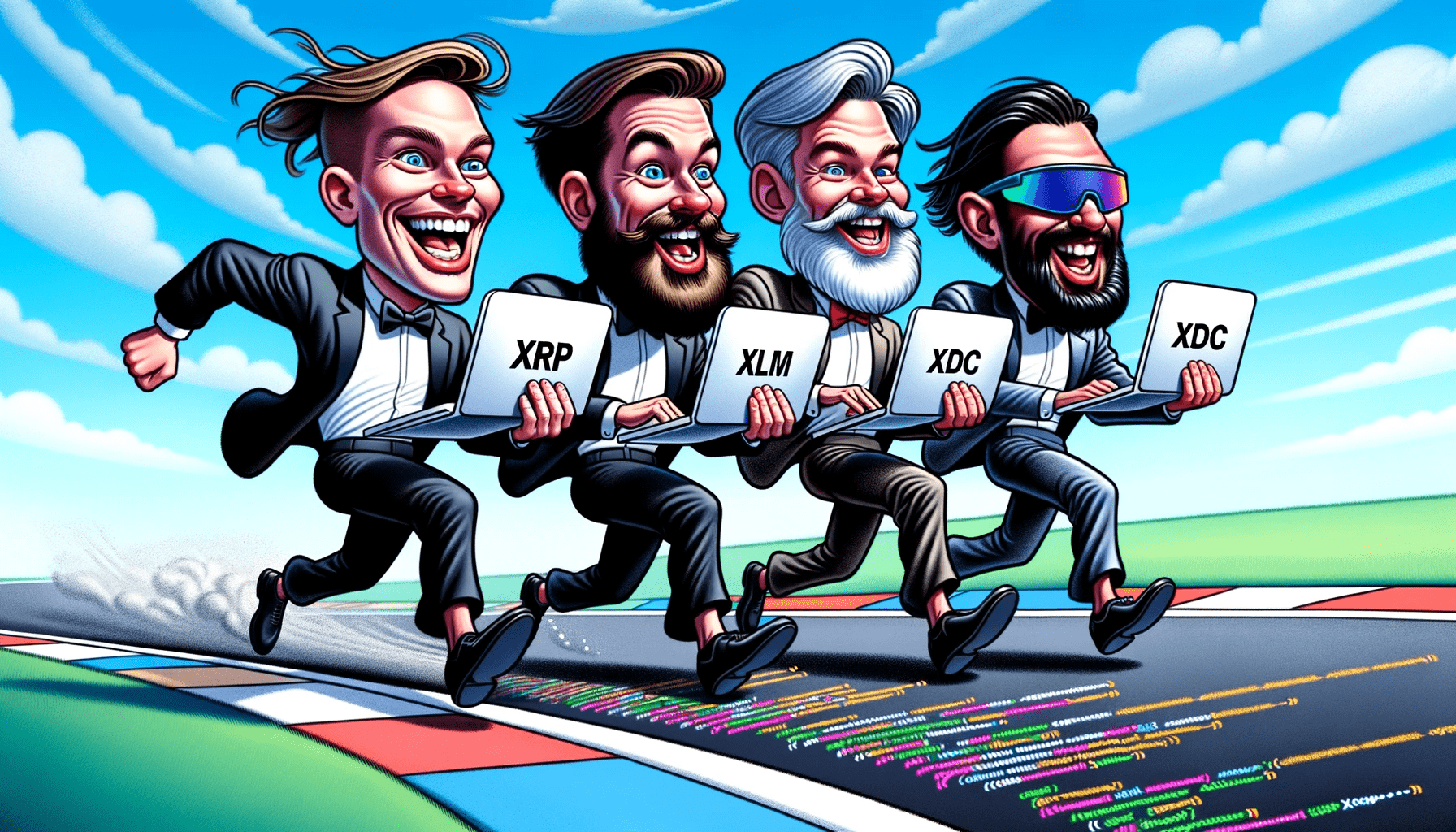Newcomers to crypto often find themselves lost in a sea of technical jargon and seemingly similar yet distinct projects. Among the stars of this vast digital cosmos are XRP vs XLMvs XDC, each representing a unique vision of how blockchain can revolutionize the world. As a new investor, the challenge is not only to understand the intrinsic value these cryptocurrencies hold but also to discern the nuances that set them apart. This analysis aims to unravel the threads of complexity surrounding these projects, providing a clear, neutral, and factual perspective. Through this lens, we will explore the fundamental technology driving these tokens, their performance in the cryptocurrency market, and the real-world problems they aspire to solve. Our journey through the analysis of XRP, XLM, and XDC will provide a scaffold of understanding, aiding new investors in making informed decisions in the blockchain realm.
Unpacking The Basics XRP vs XLM vs XDC
The first step to understanding this scenario is to get acquainted with the basics of the tokens in focus: XRP, XLM, and XDC. These three cryptocurrencies stem from different parent organizations, each with a unique vision of how blockchain technology can be leveraged to create solutions for real-world problems.
XRP: The Bridge Currency XRP is the native digital currency of the Ripple network, created by Ripple Labs Inc., with the primary aim of facilitating real-time, cross-border payments between financial institutions. Imagine being able to send money to a friend living overseas as easily and quickly as sending a text message - that's the kind of solution XRP seeks to provide. By acting as a bridge between different fiat currencies, XRP allows money to be transferred and settled in a more efficient and cost-effective manner.
XLM: Connecting People Financially XLM, or Stellar Lumens, is the cryptocurrency of the Stellar network, developed by the non-profit Stellar Development Foundation. The core mission of Stellar is to make financial services accessible to all, regardless of economic status. Picture a world where even those in the most remote or underbanked regions have the power to access and manage funds effortlessly. XLM serves as a catalyst to make this vision a reality by connecting individuals, banks, and payment systems quickly and reliably.
XDC: Hybrid Blockchain For Global Trade And Finance XDC stands for XinFin Digital Contract and is the fuel of the XinFin Hybrid Blockchain network. XinFin aims to digitize and optimize global trade and finance to ensure more efficiency and inclusivity. Imagine a small business owner in a developing country gaining the ability to engage in global trade with less red tape and more opportunities. XDC makes this possible by offering a hybrid blockchain platform that combines the best of public and private blockchains, enabling secure and efficient transactions globally.
Each of these cryptocurrencies holds a distinct place in the blockchain arena, driven by unique goals and innovative technology. As we delve deeper, we'll explore the technology that powers these tokens, their market performance, and the real-world use cases they address, painting a clearer picture of their roles in the digital economy.
The Technology Behind The Tokens
Blockchain technology is a broad and diverse field where different projects employ varying technical frameworks to achieve their goals. XRP, XLM, and XDC are no exception, each employing unique technologies to cater to their target audiences and use cases. Let's navigate through the technical landscapes of these tokens, simplifying complex terms with real-world analogies to aid understanding.
XRP: Ripple Protocol Consensus Algorithm (RPCA) XRP operates on a protocol known as the Ripple Protocol Consensus Algorithm (RPCA). Unlike the traditional proof-of-work mechanism seen in Bitcoin, RPCA allows for quicker validation of transactions. Imagine a scenario where instead of a whole town voting to approve a decision, a committee reaches a consensus quickly—this is akin to how RPCA expedites transaction validation on the Ripple network. This algorithm enhances the speed and scalability of transactions, making XRP a preferred choice for real-time, cross-border payments.
XLM: Stellar Consensus Protocol (SCP) Stellar operates using the Stellar Consensus Protocol (SCP), which is designed to provide a more flexible and efficient consensus compared to traditional consensus mechanisms. Picture a roundtable discussion where a group quickly comes to an agreement, ensuring everyone's view is considered while reaching a decision promptly. This analogy simplifies the functioning of SCP, which ensures fast, secure, and low-cost transactions on the Stellar network, making financial services more accessible.
XDC: XinFin Delegated Proof of Stake (XDPoS) XinFin employs a unique consensus mechanism known as XinFin Delegated Proof of Stake (XDPoS), which is a variation of the more common Proof of Stake (PoS) mechanism. Imagine a system where only a few trusted entities are chosen to validate transactions, much like a panel of experts making decisions in a community. This is how XDPoS operates, ensuring a faster transaction validation process while maintaining network security and integrity, which is crucial for global trade and finance operations.
Each of these technologies provides a backbone for the respective cryptocurrencies, enabling them to serve their intended purposes efficiently. While the technicalities may seem daunting at first, understanding the core mechanisms that drive these tokens brings us a step closer to discerning their potential impact in the blockchain ecosystem.
Market Performance
The financial dance floor of the cryptocurrency market is both vibrant and volatile, with tokens swaying to the rhythm of supply, demand, and regulatory tunes. The market performance of XRP, XLM, and XDC sheds light on their stability, adoption, and investor confidence. Let’s delve into their historical performance, recent market trends, and key financial metrics to provide a clearer picture of their stance in the crypto arena.
XRP: A Journey of Ups and Downs XRP's journey in the market has been akin to a rollercoaster ride, with exhilarating highs and stomach-churning lows. Known for its high liquidity and affiliation with financial institutions, XRP has seen substantial investments over the years. However, it has also faced legal hurdles that have impacted its market position. By looking at its market cap, 24-hour trading volume, and price trends, investors can gauge the level of trust and interest the market holds for XRP.
XLM: Steady As She Goes In comparison, XLM has showcased a more steady performance in the market. Its mission to bridge the financial divide has garnered attention and investment, reflected in its market metrics. The market cap and 24-hour trading volume of XLM provide insights into its acceptance and the potential growth trajectory. While it may not have reached the dizzying heights of some cryptocurrencies, its steady pace reflects a level of stability appealing to certain investors.
XDC: The Emerging Contender XDC, though lesser-known compared to XRP and XLM, is gradually carving its niche in the crypto market. Its unique approach to facilitating global trade and finance has piqued the interest of a segment of investors, as seen in its growing market cap and trading volume. As an emerging contender, its market performance is a narrative of potential and the challenges faced by new entrants in the crypto domain.
Investing in cryptocurrencies is often compared to riding waves; it requires a keen understanding of the market tides and an appetite for risk. The market performance of XRP, XLM, and XDC provides a spectrum of scenarios reflecting how different factors such as technology, mission, and external challenges can influence a token’s standing in the crypto market.
Use Cases And Partnerships

The allure of blockchain technology lies in its potential to solve real-world problems. XRP, XLM, and XDC, each with a distinct vision, venture beyond the digital realm to foster solutions in various sectors. Alongside, partnerships play a pivotal role in enhancing the credibility and operational capacity of these projects. Here, we'll traverse through the notable use cases and partnerships that define and drive these blockchain stars.
XRP: Bridging Financial Borders XRP emerges as a forerunner in facilitating real-time, cross-border transactions. Partnering with various financial institutions and payment providers, XRP aims to dissolve the barriers in international money transfers. For instance, through collaborations with banks and money transfer services, XRP endeavors to minimize the time and cost associated with cross-border transactions, bringing financial processes up to speed with the digital age.
XLM: A Financial Inclusion Advocate XLM's mission of financial inclusivity resonates through its use cases and partnerships. By providing a platform for creating, sending, and trading digital representations of all forms of money—be it dollars, pesos, bitcoin, or pretty much anything else, Stellar aims to make money more fluid, markets more open, and people more empowered. Partnerships with organizations like IBM and various financial institutions propel XLM closer to its goal of connecting people to low-cost financial services, fostering economic participation on a larger scale.
XDC: Trade and Finance On The Blockchain XDC is carving out a space in the realm of trade and finance by digitizing and optimizing processes that have traditionally been cumbersome and exclusionary. Through partnerships with financial institutions and leveraging hybrid blockchain technology, XDC aims to streamline trade finance and supply chain processes. For instance, by enabling the creation of smart contracts that automate and expedite transactions, XDC provides a blockchain-based solution for smoother global trade operations.
These real-world applications and partnerships not only depict the versatility and potential of XRP, XLM, and XDC but also provide a window into the broader impact blockchain technology can have on our world. The collaborations these projects engage in also serve as a testament to their credibility and the value they bring to the table.
Security And Consensus Mechanisms

In the realm of blockchain, security is paramount as with any technology stack. The way a network reaches consensus and validates transactions is a critical aspect that underpins its security and trustworthiness. XRP, XLM, and XDC each employ unique consensus mechanisms to ensure the integrity and reliability of their networks. Let's navigate through these mechanisms to understand how they contribute to the security and operation of these blockchain projects.
XRP: A Unique Consensus Approach XRP utilizes the Ripple Protocol Consensus Algorithm (RPCA), which is designed to provide a fast and efficient consensus process without relying on intensive computational work. This mechanism ensures that the network can reach an agreement quickly and securely. Picture a scenario where a small committee reaches a decision swiftly and accurately—this analogy simplifies the essence of RPCA, which undergirds the security and operational efficiency of the Ripple network.
XLM: Stellar’s Democratic Table Stellar employs the Stellar Consensus Protocol (SCP), a federated byzantine agreement mechanism that allows for flexible trust, meaning nodes can decide whom to trust. It's akin to a democratic roundtable where participants choose who they listen to, ensuring a level of decentralization and security. This consensus approach allows Stellar to provide a secure and robust platform for financial operations, aligning with its mission of financial inclusivity.
XDC: XinFin’s Elected Panel XinFin's Delegated Proof of Stake (XDPoS) mechanism operates like an elected panel, where a few trusted entities are chosen to validate transactions. This approach streamlines the validation process, ensuring quick and secure transactions. Imagine a council of trusted members making decisions swiftly—this is how XDPoS fortifies XinFin’s network, aligning with its goal of optimizing global trade and finance.
The security and consensus mechanisms employed by XRP, XLM, and XDC are critical facets that define their operational efficiency and trustworthiness in the blockchain space. These mechanisms are tailored to support their unique visions and use cases, providing a secure foundation upon which these projects strive to revolutionize various sectors.
Community And Developer Support
A vibrant community and active developer support are the lifeblood that drives innovation, growth, and trust in a project. The community's engagement reflects the collective belief in the project's vision, while developer activity indicates the ongoing effort to improve, expand, and secure the network. Let's delve into the community and developer support surrounding XRP, XLM, and XDC, and understand their significance in the larger blockchain narrative.
XRP: A Strong Community With Financial Focus XRP boasts a strong community of supporters and developers, often referred to as the XRP Army. Their engagement is primarily driven by the belief in XRP's potential to revolutionize cross-border transactions. Additionally, Ripple, the company behind XRP, has a dedicated team of developers consistently working to improve the network's efficiency, security, and adoption among financial institutions. The synergy between the community and developers creates a conducive environment for innovation and growth.
XLM: Bridging Gaps With Community Collaboration Stellar's vision of financial inclusivity resonates well with a global community that values democratizing financial access. The Stellar Development Foundation actively collaborates with the community and external developers to improve the network and expand its use cases. Various hackathons, community initiatives, and an open invitation for developers to contribute make Stellar a hub of collaborative growth and innovation.
XDC: Emerging Community With Trade-Focused Vision XinFin's community, though smaller compared to XRP and XLM, is highly engaged and focused on the project's vision of optimizing global trade and finance. The XinFin Developer Community (XDC) is an active cohort working tirelessly to enhance the network's features, security, and adoption in the trade and finance sectors. As XDC gains traction, the growing community and developer support signal a positive trajectory toward achieving its goals.
The robustness of community and developer support is a testament to the credibility and potential of XRP, XLM, and XDC. It's a symbiotic relationship where the community's enthusiasm and developer's expertise fuel the projects' journey towards their envisioned futures. As we transition into exploring the regulatory landscapes surrounding these projects, we'll understand yet another critical facet that influences their operation and investor confidence.
Regulatory Landscape
Navigating through the regulatory seas is a crucial part of a cryptocurrency's journey. The regulatory framework can significantly impact a project's operation, investor confidence, and market standing. XRP, XLM, and XDC, each with their unique visions and operational domains, have had their fair share of regulatory encounters. Let's delve into the recent regulatory updates surrounding these cryptocurrencies as of October 2023.
XRP: Emerging From Legal Tussles XRP has recently witnessed a significant legal victory. The US Securities and Exchange Commission (SEC) sought to appeal a ruling that found Ripple's programmatic sales of XRP did not violate securities law. However, the appeal was not approved by the judge, and only some XRP sales were found to have violated federal securities laws. In a recent update, Ripple’s Chief Legal Officer highlighted XRP’s unique non-security classification in the U.S., while mentioning that countries like Singapore and the UK have clear crypto regulations.
XLM: Enhancing Security Measures In the quest to ensure robust security on its platform, Stellar has engaged in a partnership with Certora to enhance the security of its smart contracts platform, Soroban. The partnership aims to employ formal verification tools to check the code and ensure continuous integration, aligning the code with evolving specifications.
XDC: Gaining Global Recognition XinFin's XDC Network is on the radar of significant global institutions like the International Chamber of Commerce (ICC), the World Trade Organization (WTO), Citi Group, and Trade Finance Global due to its potential to facilitate the legal acceptance of digital trade documents. The XDC Network team is optimistic about global blockchain adoption, which is perceived to bridge a substantial gap in the trade finance sector.
The regulatory landscape is a dynamic and critical facet of the blockchain and crypto domain. The recent developments surrounding XRP, XLM, and XDC reflect the ongoing efforts to align with regulatory frameworks and enhance security measures, which are pivotal in gaining investor trust and fostering the global adoption of blockchain solutions.
Conclusion: XRP vs XLM vs XDC
The expedition through the realms of XRP, XLM, and XDC unveils a spectrum of visions, technologies, and regulatory engagements. Each cryptocurrency, with its unique blueprint, strives to imprint a lasting mark in the blockchain domain. While XRP aims to streamline cross-border transactions, XLM envisages a world of financial inclusivity, and XDC aspires to optimize global trade and finance. The comparative lens sheds light on the intricate tapestry of blockchain technology, aiding new investors in charting a well-informed course in the dynamic cryptocurrency market.
Matt is the founder of TechMalak. When he's not buried face-deep in the crypto charts you can find him tinkering with the latest tech gadgets and A. I tools. He's a crypto investor and entrepreneur. He uses a mixture of A.I and human thought and input into all his articles on TechMalak, further merging man with machine.





